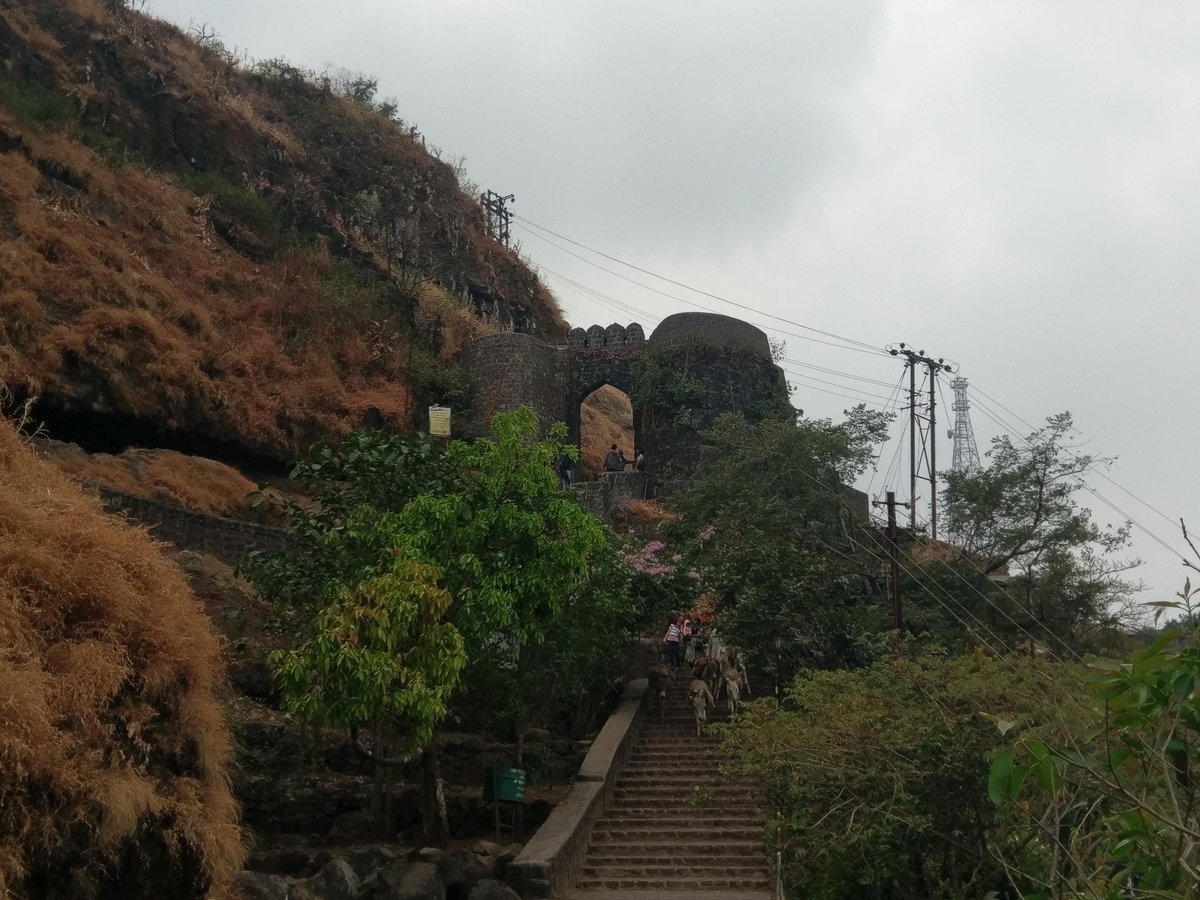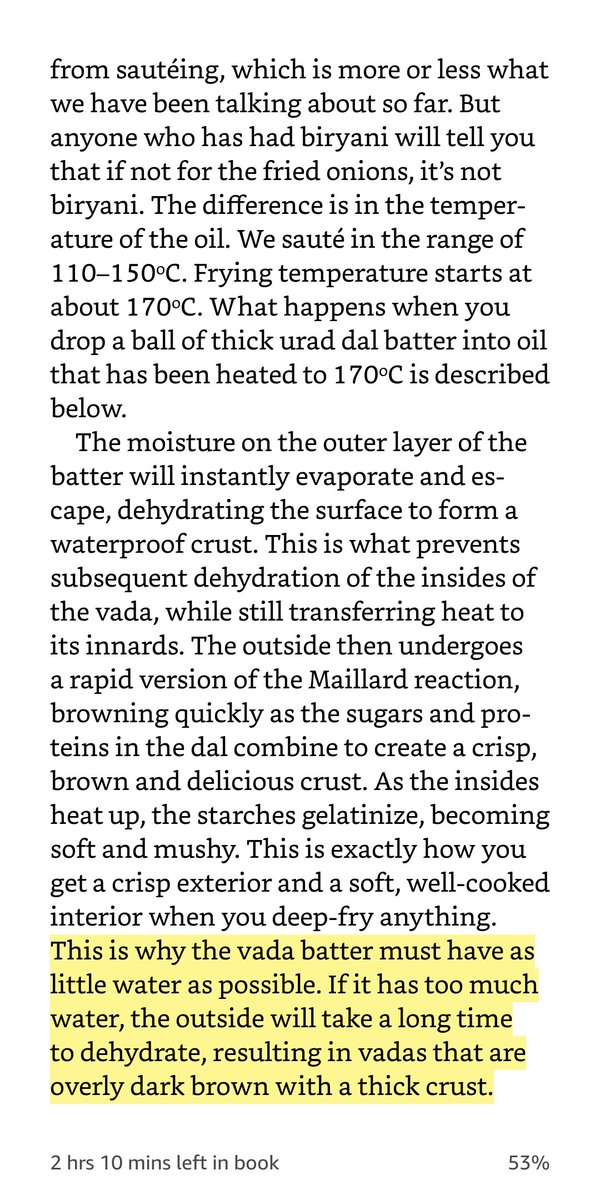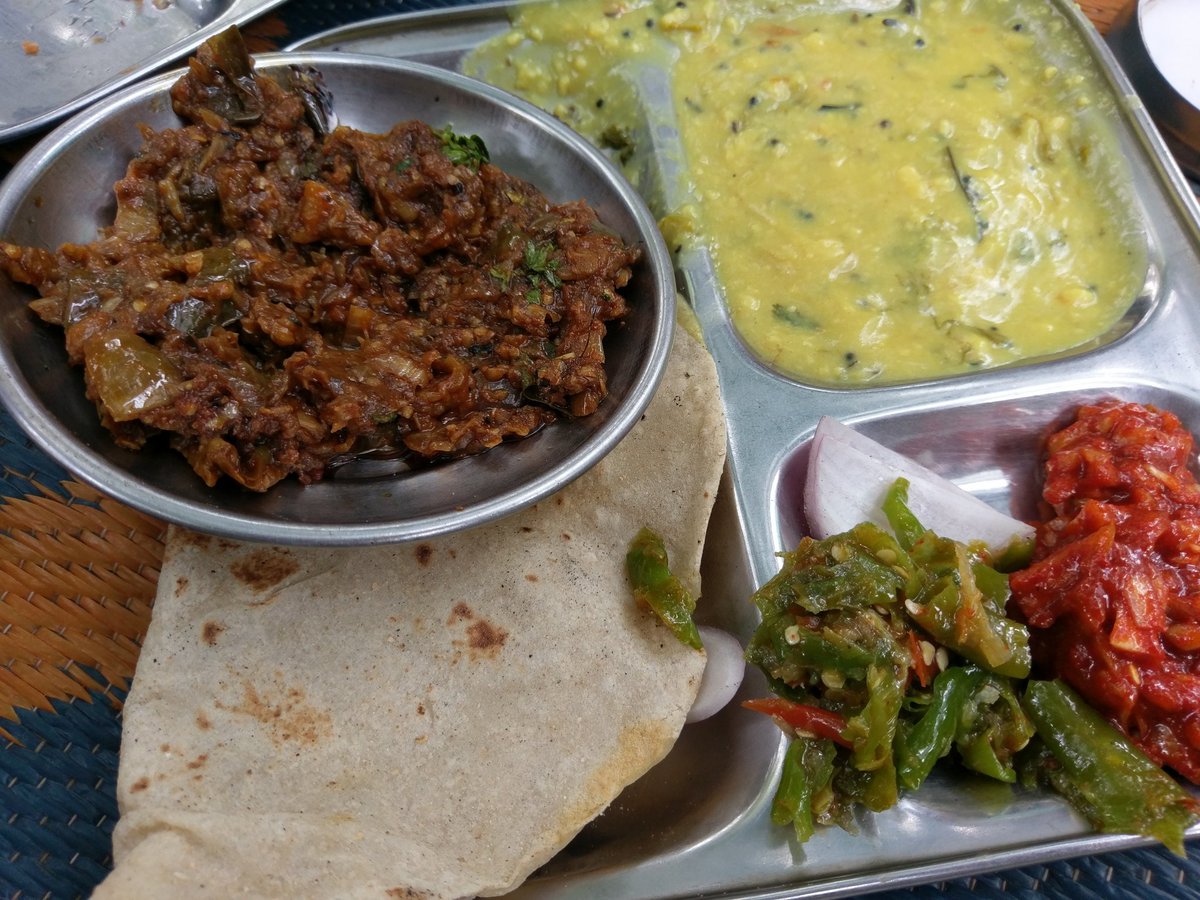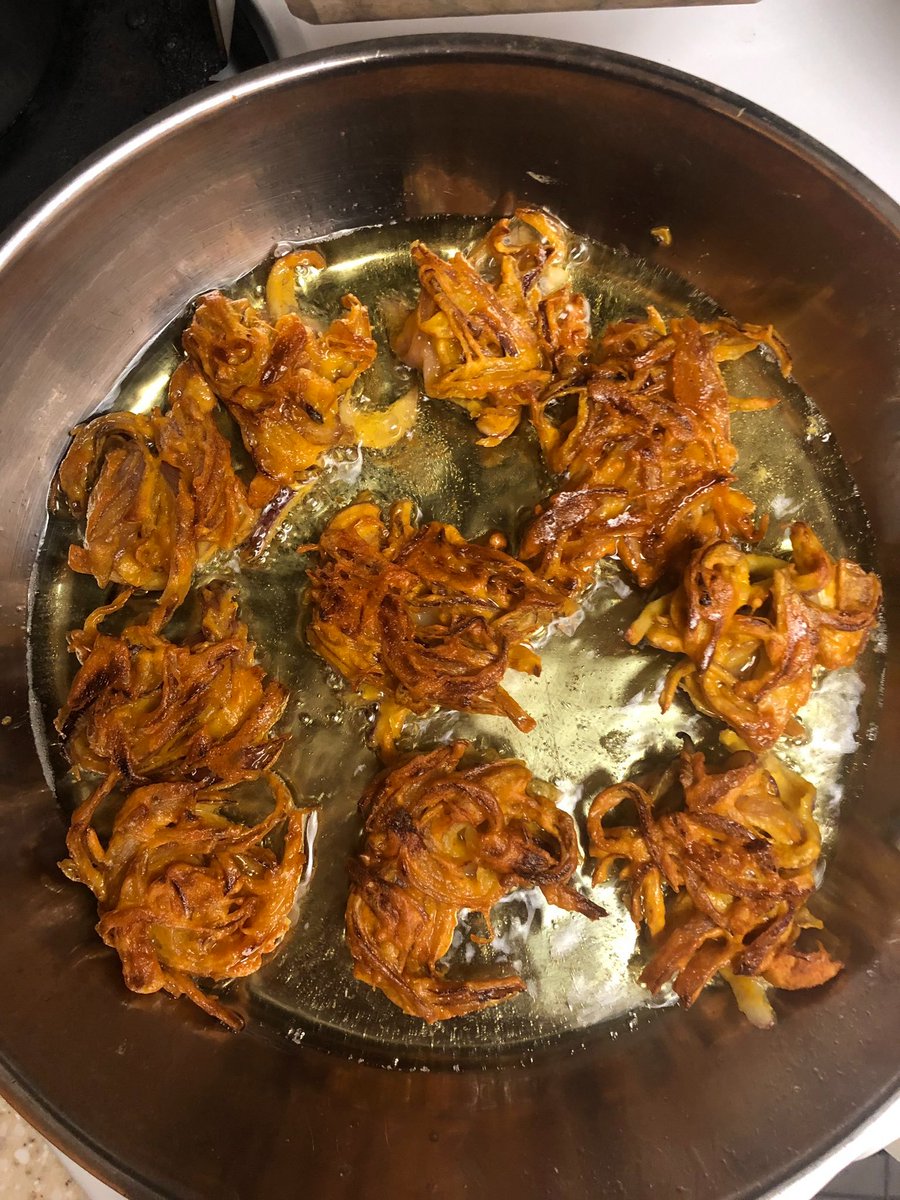This bit from @krishashok's #MasalaLab got me thinking about what I consider are the best onion pakoras or generally the best onion based dish in the world. THE WORLD. And that's the "khekda" bhaji on top of Sinhagad, a gorgeous historic fort near Pune. Last time, I explored why.
Khekda is Marathi for crab. The bhaji are so named, not because they have crab, but because they resemble crabs in appearance. Somehow even though onion bhaji in Pune city are similar, they never taste as good as at one of the dozens of food huts on Sinhagad.
So last time I visited the fort, as friends sat down to eat, I went into the "kitchen" (a simple earthen hut) and chatted with the woman and her son who ran the shack to find out more. The answer. Zero water. Zero. Yup, not a single drop of water.
They slice onion thin and long, in big piles and then just add salt to the slices and let them sit about 20 minutes. Salt releases water from vegetables (as @krishashok notes elsewhere in the book). They then add the besan, but a very small amount compared to usual pakoras.
The end result after deep frying - the thinnest crispest possible coating on onion slices, each of those almost individually separated, like crab legs. Lightest pakoras you will ever eat.
They also gave me a history lesson about how this recipe came about. Practicality.
They also gave me a history lesson about how this recipe came about. Practicality.
If you've been to Sinhagad, you know that the bulk of the food sales happen in the parking lot right at the front of the fort. Where buses and cars park. Few tourists venture too deep into the fort. So this is where the snack shops first started. Decades ago.
Tho Sinhagad has a clean yummy spring water source on top (what made the fort so strategically crucial that it's the site of an epic battle defaced by Bollywood), it's far from that front portion. And the terrain uneven and slippery. So water was at a premium.
"Water is first used for chai. We make more money from chai than food. So all our signature items like eggplant bhareet, pithla, bhakri, thecha use little to no water" said the lady running the place.
"Zero water" innovation necessitated by the practicality of not having to lug water back and forth over uneven slippery fort terrain ended up in a super perfect Maillard reaction. It's a bit tricky to get that balance right but the end result impresses https://twitter.com/natashajaved1/status/1126860286516969472?s=20
I had to really restrain myself the first time I tried the zero water approach. "Maybe just a spoonful" I felt tempted. But glad I didn't. The salt did its job. Also restrained myself in adding very little besan (another practical innovation), enough for the lightest coat.
What makes this recipe so brilliant is it's THE easiest pakora. Counter-intuitively easy. Just slice em thin, salt, let sit 20 min. Add a dusting of besan or any flour, with spices. Mix well. And fry. You can even shallow fry cos they so flexible. Try it.
Why don't the ones on Pune streets, although still lighter and crispier than the bulky onion pakoras everywhere else in india, taste as good? I've seen that process too. They add some water. Presumably cos they have access to running water. It's that little extra moisture.
P.S. some of you are asking about baking options, like oven or air fryer. Sure! I have made these in the oven too (max temp short time recommended). Once in an ebelskiever/appam pan.
Imho oven will work better cos air fryer maxes out at 400F I believe?
Imho oven will work better cos air fryer maxes out at 400F I believe?
Oh, another HUGE element of "why everything tastes special on sinhagad" is that natural year round spring water. It has a specific taste. And we know the chemistry of the water used plays a big role in determining taste. If you're in pune, try A/B testing with devtaki water.

 Read on Twitter
Read on Twitter








